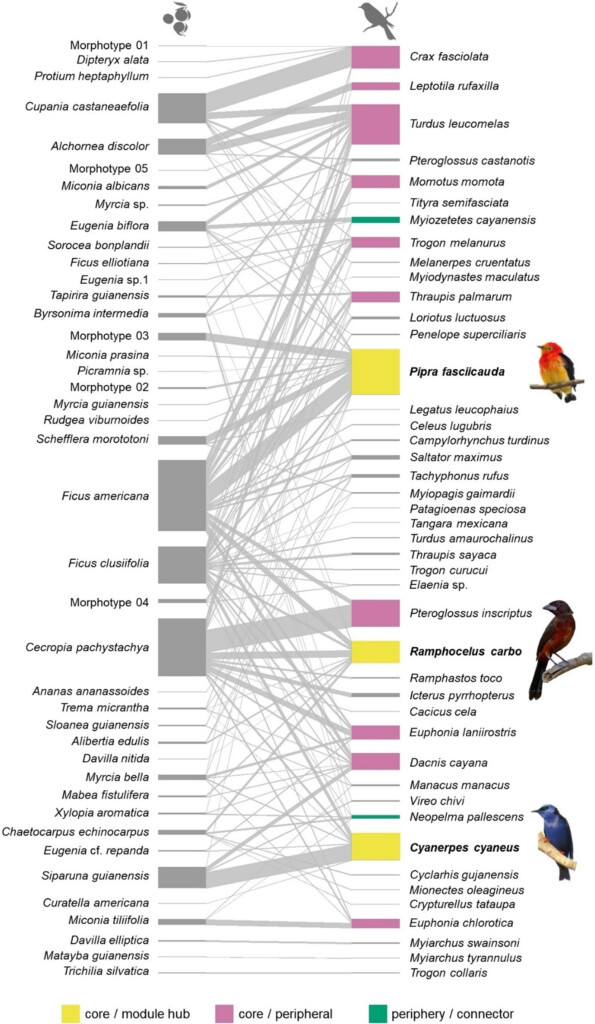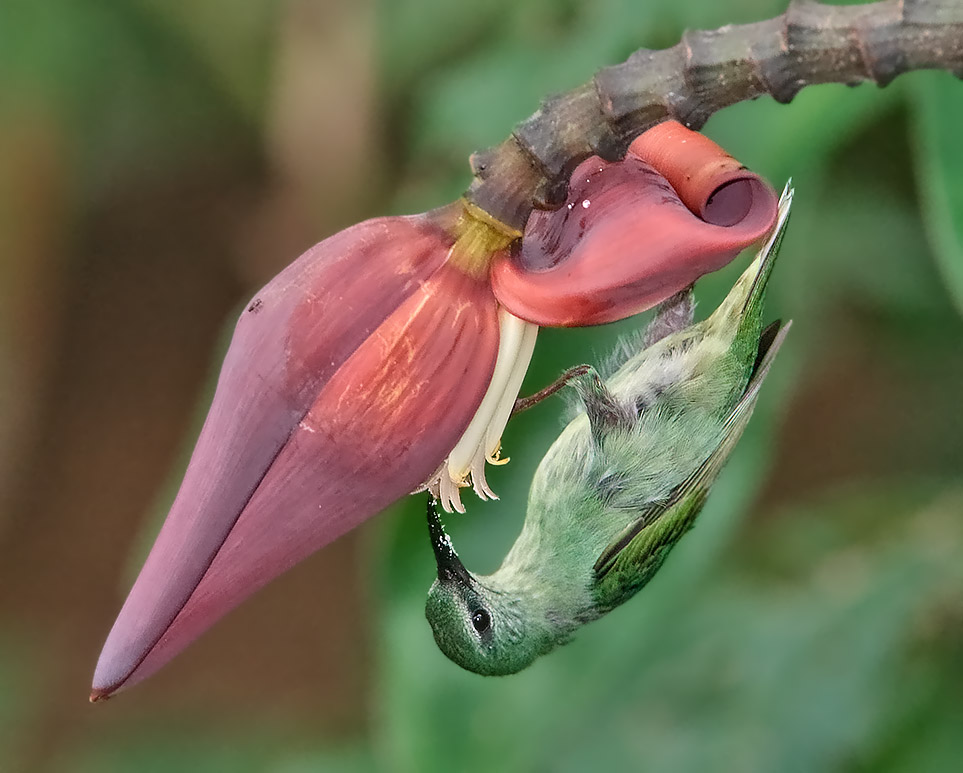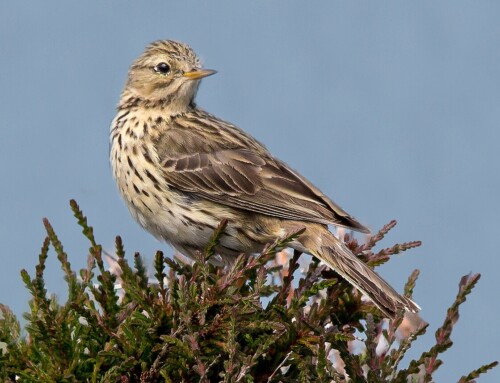
LINKED PAPER
Abundance determines core–periphery roles of birds in a Neotropical seed dispersal network. Vitorino, B. D., Frota, A. V. B. D., Nunes, J. R. D. S., Carniello, M. A., Castrillon, S. K. I., & Maruyama, P. K. 2022. IBIS. DOI: 10.1111/ibi.13075. VIEW
Charles Darwin envisioned life as a tangled bank in which species are “dependent upon each other in so complex a manner.” Nowadays, we can capture these complex interactions, such as seed dispersal or pollination, in ecological networks where different species take up different roles (Cirtwill et al. 2018). The location of species within an ecological network – central or peripheral – can provide insights into their importance for network stability (Miele et al. 2020). Removing a central species with numerous connections could result in the collapse of the entire network. Understanding ecological networks can thus inform conservation decisions.
Counting interactions
In a recent study, a team of Brazilian researchers quantified the ecological interactions between birds and plants at the Serra das Araras Ecological Station (Brazil). They recorded a total of 1132 interactions, involving 44 bird species and 41 plant species. Notably, species such as the Silver-beaked Tanager (Ramphocelus carbo), the Band-tailed Manakin (Pipra fasciicauda), and the Red-legged Honeycreeper (Cyanerpes cyaneus) played vital roles as core bird species in the ecological network. These species significantly contributed to the stability of the network, safeguarding it against potential disturbances. Identifying these central species allowed the researchers to explore another question: why are these species so central in the ecological network?

Figure 1.The ecological network between bird and plant species from the Serra das Araras Ecological Station in Brazil.
Ecology vs. abundance
The prominent role of a species within a network can be due to its ecological characteristics, such as a frugivorous diet (Acevedo-Quintero et al. 2020). Alternatively, a species may occupy a central position simply due to its abundance, engaging in numerous ecological interactions (i.e. a neutrality-based mechanism, Vázquez et al. 2007). When the researchers took a closer look at the ecology and abundance of the 44 bird species, they found that the most abundant species took up the central positions in the ecological network. These bird species were responsible for maintaining several rare plant species at the periphery of the ecological network. In the end, abundance matters more than ecology in the stability of this network.
References
Acevedo-Quintero, J.F., Zamora-Abrego, J.G. & García, D. (2020). From structure to function in mutualistic interaction networks: Topologically important frugivores have greater potential as seed dispersers. Journal of Animal Ecology 89: 2181– 2891. VIEW
Cirtwill, A.R., Dalla Riva, G.V., Gaiarsa, M.P., Bimler, M.D., Cagua, E.F., Coux, C. & Dehling, D.M. (2018). A review of species role concepts in food webs. Food Webs 16: e00093. VIEW
Miele, V., Ramos-Jiliberto, R. & Vázquez, D.P. (2020). Core–periphery dynamics in a plant–pollinator network. Journal of Animal Ecology 89: 1670– 1677. VIEW
Vázquez, D.P., Melián, C.J., Williams, N.M., Blüthgen, N., Krasnov, B.R. & Poulin, R. (2007). Species abundance and asymmetric interaction strength in ecological networks. Oikos 116: 1120– 1127. VIEW
Image credits
Top right: Red-legged Honeycreeper (Cyanerpes cyaneus) | Doug Janson | CC BY-SA 3.0 Wikimedia Commons
Blog posts express the views of the individual author(s) and not those of the BOU.
If you want to write about your research in #theBOUblog, then please see here




